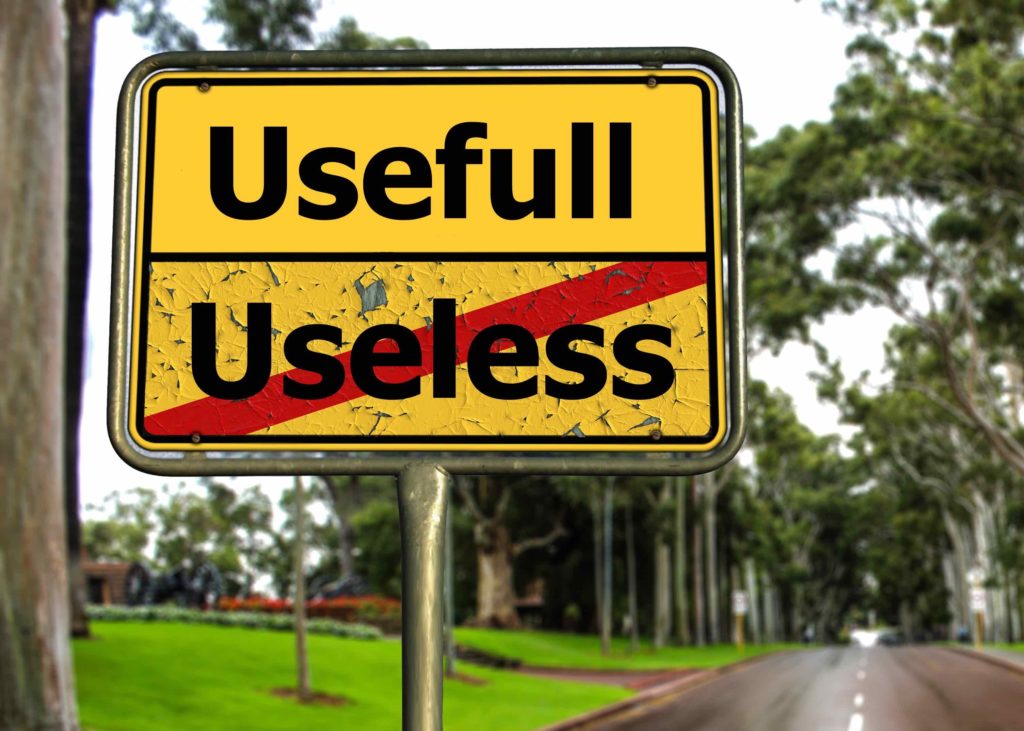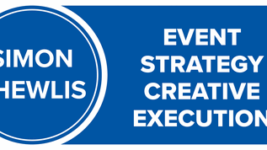News
12 Jun 2020
Innovative Thinking

Subscribe to CX E-News
“Finding a good a good way to land when falling from a cliff”
2020: the rule book is burnt; the baby, bathwater, bath and plumbing fixtures are already listed on eBay; the applecart is not so much overturned as smashed; and the public teat is agonizingly too far away to suckle meaningfully. There is no better time to try something new, to reinvent or innovate. When you are in danger of losing everything, there is little alternative…
The word innovate comes from the Latin word innovatus, roughly translated as “to renew, restore” but also “to change”. Its etymological path has since evolved it more to: “bring in new things, alter established practices”.
We currently find ourselves in constant uncertainty, requiring daily adaption to updated versions of the Software of Life™. These are testing times indeed. We need flexibility, patience, and resilience as we take on new ideas, methods, imaginations … and engage with creative thoughts … to enable new products and processes or just find ways of staying alive.
If change has long been a constant in your existence, then getting innovative is probably part of your daily routine. Look no further. For the rest of us, let’s explore some options.
Further etymology and concepts
Digging deeper into theories of innovation, you may find some common definitions. They are not exclusive, and often overlap, but can be broadly defined as: architectural, incremental, radical and disruptive innovations.
The first of these, architectural, refers to applying skills from one segment in another. A classic example is the repurposing of fancy NASA research into ‘memory foam’ pillows and mattresses.
I sleep soundly every night with that clever redeployment under my head.
In gig-world, an appropriate parallel would be my own career path through concerts, theatres, installs, distribution and now journalism. Where can you currently use the skillsets that you have acquired along the way?
Incremental innovation occurs in ongoing stages, with each version a little better than the last, slight variations being the norm rather than great upheavals. We see a lot of incremental technical innovation in AV – with releases of new hardware and software on a regular basis.
How many companies in our field innovate their processes or thinking as well? Radical innovation occurs when a breakthrough in thinking or product is released, transforming existing or creating new industries upon their release into the wild.
The transformations from arc to incandescent to LED lighting are great examples of this in our industry. As are digital mixing consoles, steerable arrays, DMX, and digital in general. Gig tech sure ain’t the same as when I started with it 30 years ago.
Imagine the consternation of ye olde theatre techies when the newfangled electrickery and light bulbs threatened their mad skills with footlights, candles and other pyro-tastic hazards. Virtual FOH is perhaps the next profound step. Are you developing a game changer?
It’s arguable that these AV industry adaptions are also examples of disruptive innovation. Here, the novelty comes through either a new value network or technology that disrupts the existing market. Sometimes it is obvious (like smartphones), other times the breach is stealthier (a la AV over IP).
How long since you consulted a physical encyclopedia? Consider moving lights: once upon a time, LX fixtures were just that – fixed. Then came Vari- Lite. Their disruption cornered the wiggly light market for a good long time until everyone else caught up. Their rent-only business model was solid for decades, but we don’t see as much of them in the antipodean market anymore.
Agile Innovation Framework (and other academic constructs)
There has been much bluster over the last 15 years about agile innovation in business. In some industries with quick to-market turnarounds, such as software, it can be a saviour; in others, it can be counterproductive.
For example, if you have cornered a market and have little competition, then why waste precious business time re-organising your processes? The ‘official’ framework for this methodology consists of two distinct phases – a. Discovery, and b. Delivery.
These are pretty broad terms but it comes down to a. looking at what you do, and b. working out how to do it better. Hardly rocket science but apparently worthy of an MBA. I’ve seen many other business theories in my travels, such as Systems Thinking, or the Kanban Maturity Model, but have also seen a lot of waffle and time wasted when they are not embraced by key stakeholders or the company as a whole.
If there is a concerted buy-in, innovation culture can be a powerful tool in your business’ approaches, but it is not an overnight miracle cure and will take sustained effort over a long time period by everyone involved to make appreciable gains.
Our recent PM was often banging on about agile innovation. Look where it got him! In the end, he was neither agile nor innovative enough to bring the whole team with him.
Your mileage may vary. “Innovate or Die” was a popular catchphrase 5-10 years ago. The mantra contained some truths, particularly for businesses impacted by the digital disruptions of that era and since, but is really a bit Gordon Gekko in approach. You’ll know what changes to practice will work in your case.
When it’s no good
Just because something is new does not necessarily make it better. Change for change sake is not an end in itself. I once had it out with a boss who treated his workforce with little regard.
I put it that if he showed us more respect, we’d care more and give better service to his customers. He replied with: “I don’t give a toss – I’m making a million a year. Why should I change?” Well, he’s now worth that and a lot more and I’m on the breadline again. I can see his point.
Although he did slowly change some practices, perhaps his business strength has been keeping with known knowns while minimising unknowns and risk.
The formal term for this is “exnovation”… but really it is just sticking to a winning formula. He focused on cheap and consistent delivery to his customers. Any innovations were minimal and cumulative over time.
Of course, the risk with slow and steady comes when the whole industry rapidly pivots around you. Think Kodak, MySpace, Blockbuster, Xerox and any number of ventures that missed the warning signs and failed to keep up with changes in their markets.
Perhaps I could ride my Segway over to yours for some quality Commodore or Atari action – I’ll send an invite with my Palm Pilot (I mean, Blackberry) via Yahoo. Maybe I’ll just bring the Hummer…
Think laterally
Inspiration for new ways of thinking can come from unexpected quarters. As regional logistics manager for an AV hire and distribution company, I was always looking for efficiencies in deploying labour and assets.
I didn’t (and still don’t) have any formal training in business, but I’ve studied widely and looked to outside interests for an angle. Having recently discovered PC gaming, I tried out some strategies (all resources on one job vs splitting resources across multiple jobs) in the sandbox environment of the RTS game-de- jour, Starcraft.
To be honest, I cannot now recall any specific wins with this method but I remember testing the strategic approaches and seeing many parallels between gaming and management. At the time, I was also reading The Art of War, so that may have also coloured my thinking too.
Either way, I did manage to refine many work practices, saving time and money while making the boss no end of happy.

Implementation, reiteration and renovation
Unless you are a mad inventor, radical disruptor-type of person or company, there is value in sticking to the known. And that’s all good in a stable, slowly growing economic environment but when the whole equation gets re-written daily, it might be time to start getting creative with your products or services.
Engage some right / left brain thinking and consider all options. Evaluate each choice and see if they might fit your business model and capabilities in this dynamic space.
Wanna buy an airline? How about a better mousetrap? Are you the next DaVinci? By all means, stay abreast of high profit tech but play to your strengths and invest wisely in good value propositions. Don’t forget to stay open to newer ways of delivering your professional offerings.
New approaches to a new world
While we are hanging on for dear life on this white-water rafting style of trip, we need to constantly rewrite or re-evaluate the rules. True to the allegory, we should hang on tight through the rapids (trying not to lose anyone overboard), take stock in the eddies (while scoping the next rapid) and do our best to portage around the biggest waterfalls.
While we are bouncing along between the rocks, looking for a safe place in the torrent, what better juncture to renew than right now? We as individuals, as companies, and as an industry have little choice. We need to innovate our practices, revitalise our thinking, invent new paradigms and plan towards the next big show.
Then, when the inns reopen, we can do what we do best and put on a kickarse spectacle worthy of a standing ovation. Encore…
CX Magazine – June 2020
LIGHTING | AUDIO | VIDEO | STAGING | INTEGRATION

Entertainment technology news and issues for Australia and New Zealand
– in print and free online www.cxnetwork.com.au
© VCS Creative Publishing
Subscribe
Published monthly since 1991, our famous AV industry magazine is free for download or pay for print. Subscribers also receive CX News, our free weekly email with the latest industry news and jobs.









